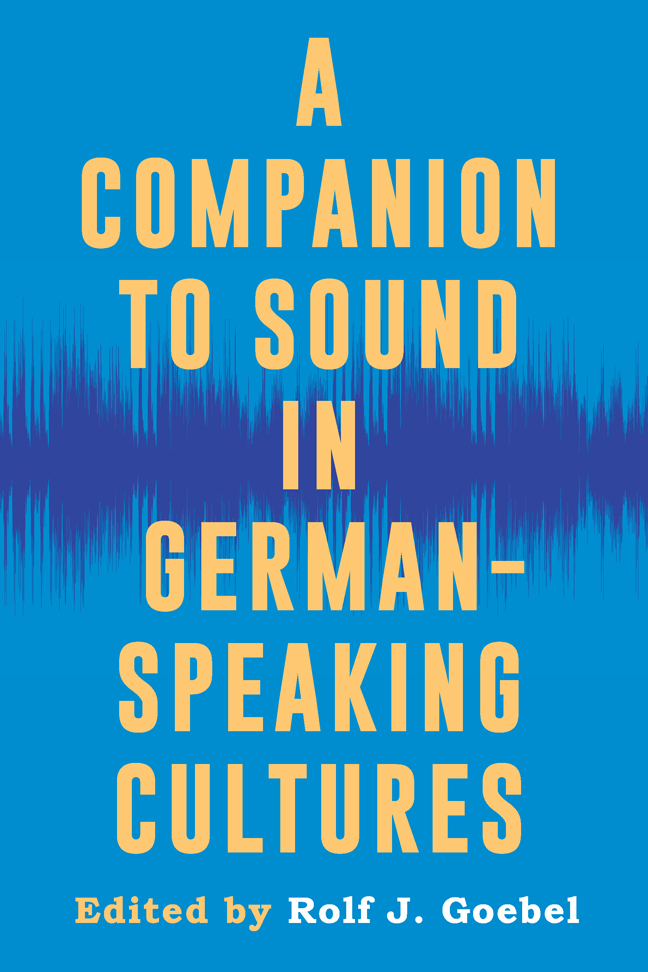Book contents
- Frontmatter
- Contents
- List of Illustrations
- Preface
- Introduction
- Part I Sonic Practices from the Middle Ages to the Nineteenth Century
- Part II Rediscovering the Sounds of Modernism
- Part III Listening to the Unbearable: The Sounds of National Socialism and the Holocaust
- Part IV After the Catastrophe: Sounds in Postwar Germany and Beyond
- Part V Sounds of the Present
- Part VI Epilogue
- Select Bibliography and Further Reading
- Notes on the Contributors
- Index
17 - The Sound of Pine Needles Falling: The Art of Max Neuhaus
Published online by Cambridge University Press: 21 February 2024
- Frontmatter
- Contents
- List of Illustrations
- Preface
- Introduction
- Part I Sonic Practices from the Middle Ages to the Nineteenth Century
- Part II Rediscovering the Sounds of Modernism
- Part III Listening to the Unbearable: The Sounds of National Socialism and the Holocaust
- Part IV After the Catastrophe: Sounds in Postwar Germany and Beyond
- Part V Sounds of the Present
- Part VI Epilogue
- Select Bibliography and Further Reading
- Notes on the Contributors
- Index
Summary
I. Introduction
Max Neuhaus Was Born on August 9, 1939, and died on February 3, 2009. He was an American musician, composer, and artist who was a noted interpreter of contemporary and experimental percussion music in the 1960s. The grandson of an immigrant from Hamburg, Neuhaus attended the Manhattan School of Music, very quickly becoming one of the best percussionists of his time. His musicianship introduced him to the magical circle of the musical avant-garde of the sixties. Meeting avant-garde composer Karlheinz Stockhausen during the inaugural performance of the composer's Zyklus in New York, as well as contacts with other composers of the time—Edgard Varèse, John Cage, and Morton Feldman—offered him friendship and access to musical culture. Very significant is also a commission by the Donaueschingen Music Festival for a collective radio sound work at the end of his life. But, more significantly, at a certain point, Neuhaus invented what he named “sound sculptures.” Soon these installations were divided into categories such as Place Pieces, Moment Pieces, etc. Their common denominator, the fact they all were tied to a precise locality and time, meant that the sound could not be reproduced authentically. Retraining at the Bell Laboratories in making electronic music gave Neuhaus an incomparable palette of sound samples from which he composed his work. He went on to create numerous permanent and short-term sound installations. He performed as a percussion soloist on concerts tours throughout the United States with Pierre Boulez (1952–63) and Karlheinz Stockhausen (1963–64). In 1964 and 1965, he presented solo recitals at Carnegie Hall in New York City and in fifteen major European cities. In 1966, he published on Mass Art Inc. four live realizations of John Cage's Fontana Mix (1958).
An indeterminate graphic score originally intended for a tape piece, with or without additional instruments, the Fontana Mix-feed, in Neuhaus's realizations, employed controlled feedback generated by placing contact microphones on percussive instruments and hooking the microphones up to loudspeakers positioned directly opposite the instruments. Neuhaus's work as a percussionist culminated in an album of contemporary solo percussion work, Electronics & Percussion—Five Realizations, which he recorded for Columbia Masterworks in 1968. From then on he pursued a career as a contemporary artist by developing sound installations, using electronic or electroacoustic sounds, which would emanate from a source within a particular space or location.
- Type
- Chapter
- Information
- A Companion to Sound in German-Speaking Cultures , pp. 271 - 284Publisher: Boydell & BrewerPrint publication year: 2023



